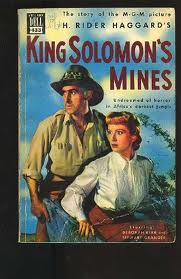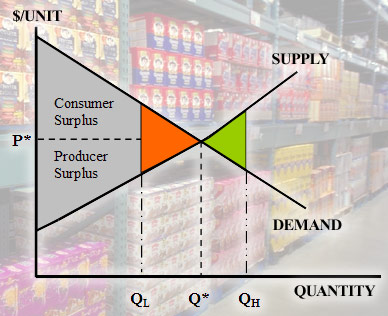The Ebook Revolution
I think today it is both revealing and helpful to think about e-book pricing in the context of the rise of mass market paperbacks in the 1950’s and into the 1960’s.
As a book industry veteran friend of mine has pointed out to me, when mass market paperbacks first became popular, they were priced at approximately 10% of the retail price of the then prevalent hardcover editions, on average about $.25 for a mass market paperback at a time when hardcover books were selling for $2.50 or $3.00.
At that time, paperbacks were cheaply produced in huge quantities and displayed in drugstores, supermarkets, department stores. Some of the relatively small number of independent bookstores did not even carry mass market paperbacks, and if they did, they were in racks and spinners supplied to them by the wholesalers that controlled magazine distribution and therefore had access to retailer channels.
Mass market paperbacks were initially differentiated by being reprints of books that had come out first in hardcover, and because publishers knew they would compete with their higher priced new books, they simply held back mass market releases until the hardcover sale had run its course, usually a year, to be sure they harvested as much demand as possible at the higher hardcover price. Some titles, particularly those in genres like westerns, mysteries, science fiction and romance, were released in mass market first (or only), to feed the burgeoning demand of general readers for inexpensive entertaining books (which publishers differentiated, sometimes snootily, from the “serious literature” and nonfiction they saw as the core of their business).
Sound familiar?
Over time the “paperback revolution” grew to include a later invention, the larger and more expensive, better printed, “trade paperback” and now of course, mass market editions have significantly declined, mainly because their former mass merchant, drugstore, supermarket and airport store core outlets shifted their shelf space to higher margin products in other categories.
Today we are witnessing the advent of what is essentially, the first new book format in almost 75 years, the e-book (the audio books was of course, a new format but not for reading). E-books can create new markets for books in the same way that mass market paperbacks did. Readers who could not afford hardcovers, readers who found paperbacks more convenient, readers who were voracious consumers of books, all flocked to the new paperback format, just as they are doing today for e-books.
E-books are poised to create a new revolution of their own, certainly proven by current rates of sales on many titles. But one thing is different about e-books. At the outset of the mass market paperback revolution, books in this format were published under license by new companies or in some cases introduced new writers in categories that were underserved or not served at all by old line hardcover publishers, such as romance, westerns, mysteries and science fiction categories. These new publishers recognized their market niche as open but at low prices to take advantage of a new market that would simply not buy books at the higher prices commanded by hardcovers.
Today, e-books are being publisher for the most part, by the same publishers who issue the print versions originally. E-books are not seen as a “subsidiary” rights sale, but as an extension of the initial publishing strategy. Combined with their desire to preserve revenue against existing overhead in a business that was built for print, publishers are pricing ebooks much higher in relation to hardcovers and trade paperbacks than mass market paperbacks ever were priced. So we see many ebooks priced at $9.99 (the new defacto standard for many books it seems) and up.
Many smaller trade publishers, as well as authors publishing their own books and some new digital-only publishers are pricing their ebooks at much lower levels ($5.99 and down). If you look at ebook sales, it is pretty obvious that price is a huge driver for many consumers. At $3.99 (or better yet, $2.99 or even $.99), readers will often take chances on a new or emerging writer, or an established writer who might be new to them.
At $9.99 (or more) most readers will not take chances. The risk and reward don’t line up when reading time and money are precious.
All books are price sensitive of course, so publishers will reasonably argue that they do not want to race to the bottom, or devalue their authors’ works. Those are of course valid arguments in favor of keeping prices of ebooks more like hardcover books than the much lower levels that are equivalent to mass market pricing.

(Supply and demand determine a product’s equilibrium price and quantity. Graph courtesy of Prof. Daniel Richards. Background image courtesy of Ken Hammond, U.S. Department of Agriculture.)
But I will argue that traditional publishers are missing the market opportunity created by the e-book revolution when they fail to create a significant price benefit for their e-books. Publishing digitally is in fact less expensive than publishing print books. This does not mean that every book should be digital only – readers have proved over and over again that they will buy print books when they feel the need to have a visible “souvenir” of their reading experience, a book in physical form, and many readers are willing to pay a premium for this version.
Just as equally, consumers have made clear that if books are inexpensive, they will buy and read more of them, taking on more risk and rewarding publishers and authors they like with a full measure of loyalty and commitment.
I think this means that publishers should now be thinking hard about ways they can reduce ebook prices and increase readership. Publishers who are willing to reduce prices will create a real “ebook revolution.” We can do this by pricing our ebooks low enough to broaden the market for books and reading, while our consumers reward us with higher sales and the kind of support and commitment that other media would be thrilled to have.
Authors also need to recognize that this strategy is in their best interests. With ever more writers seeking readers, it makes sense to use price to gain attention, as Amanda Hocking and C.A. Konrath and many others have bravely demonstrated. Now that we live in an attention economy, creatives in every media form need discovery and consumers’ time and attention even more than they need money from sales (in the attention economy, money follows where attention leads – and that is the subject of my next post on digital publishing).
I’d like to point out that my friend, the much admired Mike Shatzkin, has posted a new piece called “Ebooks are making me recall the history of mass-market publishing” which is more detailed and grounded in historical detail than what I have written here, and I recommend reading Mike’s piece for further confirmation of my views. Thanks also to Lou Aronica of The Fiction Studio for suggesting the original mass market paperback as the best way to think about ebooks today.



